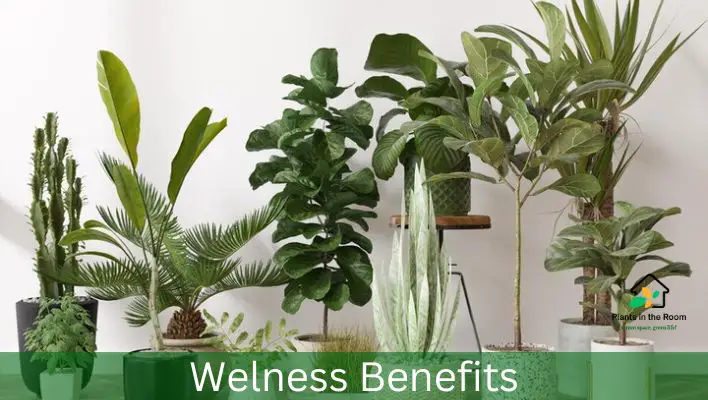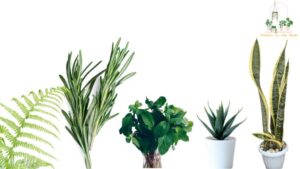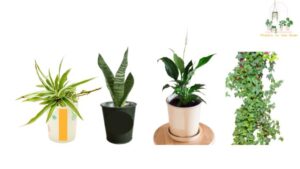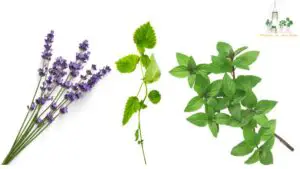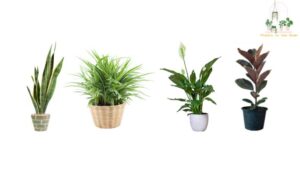This list is subject to be updated on a regular basis.
Welcome to our comprehensive glossary that aims to familiarize you with a wide range of terms and concepts associated with the numerous health and well-being advantages of incorporating indoor plants into your living and working spaces.
From air purification to stress reduction, indoor plants offer an array of benefits that can transform your environment into a more soothing, aesthetically pleasing, and health-promoting sanctuary.
This glossary serves as a valuable resource for plant enthusiasts, interior designers, and anyone interested in understanding the science behind the positive impact of indoor plants on our lives.
Whether you are a seasoned plant caretaker or just starting to explore the world of indoor gardening, this glossary will help expand your knowledge and appreciation for the incredible wellness benefits that indoor plants can provide.
- Absorption: Absorption is the process of taking in substances. Indoor plants can absorb harmful chemicals from the air, improving its quality.
- Aeration: Aeration means air moving in and out of a room. Indoor plants help this by taking in carbon dioxide and giving out oxygen, making the air fresh.
- Air purification: This is when the air is cleaned of pollution and dirt. Indoor plants help by taking in harmful chemicals and giving out clean oxygen.
- Allergens: These are things that can cause allergies. Some indoor plants might cause allergies, but many others help by cleaning the air of allergens.
- Ambient temperature: This is the room’s temperature. Indoor plants can help control the temperature by releasing water into the air, making it cooler.
- Aromatherapy: Aromatherapy is a natural way to heal using plant-based oils. Some indoor plants release oils that can help people feel better.
- Biodiversity: Biodiversity refers to the variety of life in an area. Indoor plants can increase biodiversity in a space, promoting a healthier ecosystem.
- Biophilia: Biophilia is the love for nature and living things. Indoor plants bring nature inside, making people feel more connected and happy.
- Carbon dioxide: Carbon dioxide is a gas that humans breathe out. Indoor plants take in carbon dioxide and turn it into oxygen, which is good for us to breathe.
- Chlorophyll: Chlorophyll is the green substance in plants that helps them make food. Indoor plants with chlorophyll clean the air and make it healthier.
- Cognitive function: Cognitive function is how well your brain works. Indoor plants can help improve cognitive function by reducing stress and providing a more pleasant environment.
- Detoxification: Detoxification means getting rid of harmful substances. Indoor plants can help detoxify the air by removing harmful chemicals.
- Dust reduction: Dust can cause allergies and breathing problems. Indoor plants help reduce dust by catching it on their leaves, making the air cleaner.
- Ecotherapy: Ecotherapy is a type of therapy that involves interaction with nature. Indoor plants can provide a form of ecotherapy by bringing nature into your living space and promoting relaxation.
- Energy conservation: Energy conservation is about using less energy. Indoor plants can help conserve energy by regulating temperature and humidity, reducing the need for heating and cooling systems.
- Evapotranspiration: This is when plants release water into the air. Indoor plants do this, which can help control humidity and make the air more comfortable.
- Foliage: Foliage is the leaves of a plant. Indoor plants with lush foliage can improve air quality and create a visually appealing space.
- Formaldehyde: Formaldehyde is a harmful chemical found in some indoor products. Indoor plants can help remove formaldehyde from the air, making it safer to breathe.
- Green living: Green living means making choices that are good for the environment. Having indoor plants is one way to live a greener life.
- Horticultural therapy: Horticultural therapy is a therapeutic approach that uses gardening and plant care to improve mental and physical health. Caring for indoor plants can provide similar benefits, such as stress reduction and a sense of accomplishment.
- Humidity: Humidity is the amount of moisture in the air. Indoor plants can help balance humidity by adding or removing moisture, making the air more comfortable.
- Hygge: Hygge is a Danish concept of coziness and comfort. Indoor plants can contribute to a sense of hygge by creating a warm, inviting atmosphere.
- Immune system: The immune system is the body’s defense against illness. Indoor plants can help support a healthy immune system by improving air quality and reducing stress.
- Indoor air quality: This is how clean or polluted the air is inside. Indoor plants can help improve air quality by removing harmful chemicals and allergens.
- Mental health: Mental health is about how we think and feel. Indoor plants can help improve mental health by reducing stress and creating a calming environment.
- Microbes: Microbes are tiny living things, like bacteria. Some indoor plants can help reduce harmful microbes in the air, making it healthier to breathe.
- Microclimate: A microclimate is a small area with specific environmental conditions. Indoor plants can help create a microclimate within a room by regulating temperature, humidity, and air quality.
- Mood booster: Something that makes you feel happier. Indoor plants can be mood boosters because they create a pleasant environment and help clean the air.
- Natural air freshener: A natural way to make the air smell good. Some indoor plants give off pleasant scents that can act as natural air fresheners.
- Negative ions: Negative ions are molecules with an extra electron. Indoor plants can release negative ions, which can improve air quality and promote relaxation.
- Noise reduction: Indoor plants can help reduce noise by absorbing sound waves, making the space quieter and more peaceful.
- Office productivity: Office productivity is how much work gets done in a workplace. Indoor plants can help boost productivity by improving air quality, reducing stress, and enhancing cognitive function.
- Oxygen production: Oxygen is a gas that humans need to breathe. Indoor plants produce oxygen through photosynthesis, helping to improve air quality.
- Pest control: Indoor plants can help control pests, like insects, by attracting natural predators or repelling the pests with their scent.
- Photosynthesis: Photosynthesis is the process plants use to make food and oxygen. Indoor plants perform photosynthesis, which helps clean the air.
- Phytochemicals: Phytochemicals are chemicals found in plants that can have health benefits. Some indoor plants release phytochemicals that can improve air quality and support well-being.
- Phytoextraction: Phytoextraction is when plants absorb harmful substances from the air, water, or soil. Indoor plants can help remove pollutants through phytoextraction, improving air quality.
- Pollinator attraction: Pollinator attraction refers to attracting insects and animals that help plants reproduce. While not directly related to indoor plants, creating an indoor garden can raise awareness of the importance of pollinators for outdoor plants.
- Pollutants: Pollutants are harmful substances in the air, water, or soil. Indoor plants can help reduce pollutants in the air, making it healthier to breathe.
- Psychological benefits: Psychological benefits are positive effects on the mind. Indoor plants can provide psychological benefits by reducing stress and improving mood.
- Respiration: Respiration is the process of breathing. Indoor plants can help improve respiration by cleaning the air and providing oxygen.
- Sleep aid: Something that helps you sleep better. Some indoor plants can act as sleep aids by improving air quality and creating a calming environment.
- Soil health: Soil health is important for plant growth. Indoor plants can help improve soil health by breaking down pollutants and adding nutrients.
- Stress reduction: Reducing stress is important for overall health. Indoor plants can help reduce stress by creating a relaxing environment and improving air quality.
- Sustainability: Sustainability is about using resources responsibly. Indoor plants can contribute to a more sustainable lifestyle by improving air quality, conserving water, and reducing energy consumption.
- Temperature regulation: Temperature regulation is about maintaining a comfortable indoor temperature. Indoor plants can help with temperature regulation by releasing moisture into the air and providing shade.
- Toxins: Toxins are harmful substances. Indoor plants can help remove toxins from the air, making it safer to breathe.
- Ultraviolet (UV) radiation: UV radiation comes from the sun and can be harmful. Some indoor plants can help filter UV radiation, protecting people and other living things.
- Ventilation: Ventilation is the movement of air through a space. Indoor plants can help improve ventilation by releasing oxygen and absorbing carbon dioxide.
- Visual appeal: Visual appeal is how attractive something looks. Indoor plants can improve the visual appeal of a space, making it more enjoyable and inviting.
- VOCs: VOCs (volatile organic compounds) are harmful chemicals found in some indoor products. Indoor plants can help remove VOCs from the air, improving air quality.
- Water filtration: Water filtration is the process of removing impurities from water. Some indoor plants can help filter water, removing toxins and improving its quality.
- Well-being: Well-being is the overall state of feeling good and healthy. Indoor plants can contribute to well-being by improving air quality, reducing stress, and providing psychological benefits.
- Xeriscaping: Xeriscaping is a landscaping method that uses plants that need little water. Some indoor plants are suitable for xeriscaping and can help conserve water.
- Zen: Zen is a state of calm and relaxation. Indoor plants can help create a Zen-like atmosphere by providing a peaceful environment and improving air quality.
- Zonal geranium: Zonal geranium is a type of indoor plant that can provide many wellness benefits, including air purification, stress reduction, and improved mood.
This glossary highlights the remarkable ways in which indoor plants can contribute to our overall well-being and enhance the quality of our indoor environments.
By understanding the terminology and concepts presented in this glossary, you can make informed decisions when selecting and caring for indoor plants, ensuring that you maximize their potential to create a healthier, more comfortable, and more beautiful living or working space.
As our awareness of the importance of indoor air quality and mental health continues to grow, embracing the benefits of indoor plants becomes increasingly essential.
We hope that this glossary serves as a valuable resource for your journey in cultivating a thriving indoor garden that promotes wellness and enriches your life.
Disclaimer
The information provided in this glossary is intended for general educational and informational purposes only. While every effort has been made to ensure the accuracy and completeness of the information presented, the authors and publishers of this glossary cannot guarantee its validity, reliability, or applicability to individual circumstances.
The use of this glossary and its contents is at the reader’s own risk. Before making any decisions or taking action related to the content provided, it is recommended that readers consult with qualified professionals, such as horticulturists, botanists, or indoor air quality specialists, to address their specific needs and concerns.
The authors and publishers of this glossary shall not be held responsible or liable for any errors, omissions, or outcomes resulting from the use or reliance on the information provided herein.

